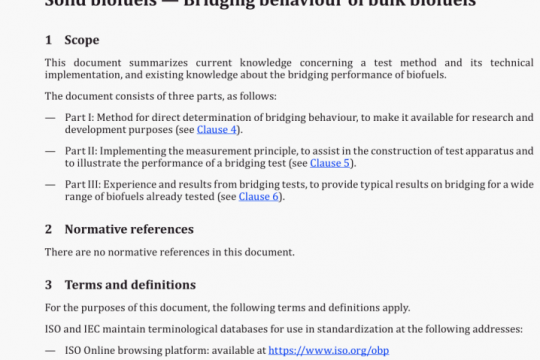ISO 15096 pdf free download
ISO 15096-2020 pdf free download.Jewellery and precious metals – Determination of high purity silver一 Difference method using ICP-OES.
8 Procedure
8.1 General
WARNING — Suitable health and safety procedures should be followed.
All vessels and reagent bottles shall be teflon (e.g. PFA, FEP) or plastic.
8.2 Sample solution
For each sample to be analysed, two sample solutions shall be prepared as follows and analysed.
The sample should be etched, washed and dried before use to remove any surface contamination.
Weigh (500 ± 10) mg of the sample portion to the nearest 0,1 mg, transfer Into a 50 ml beaker, and add 7,5 ml of H20 and 7,5 ml of HNO3 (52). Heat gently until complete dissolution of the sample and continue to heat to expel the nitrogen oxides. Add 10 ml of water. After cooling to room temperature, transfer the solution from the 50 ml beaker to the centrifuge tube. Centrifuge the mixture at 3 000 r/min for 5 mm and transfer the liquid phase into a 50 ml volumetric flask. Add 5 ml of water to the residue, centrifuge the mixture again at 3 000 r/min for 5 mm more, and add the newly formed liquid phase to the 50 ml volumetric flask. This operation is repeated two extra times. Make up the volume of the volumetric flask water to 50 ml, and mix thoroughly.
Alternatively, after cooling to room temperature, filter the solution through a microfiltration system (6,.5), add the filtrate to a 50 ml volumetric flask and make up the volume of the solution with water to 50 ml, and mix thoroughly. Analyse this solution without delay using the calibration solutions specified in 8.3.
Add 2 ml of freshly prepared aqua regia (53) to the residue after centrifugation or microfiltration (if microfiltration is used, the filter shall be dissolved, too). Heat until complete dissolution and continue to heat to expel the nitrogen oxides. Cool to room temperature, transfer to a 5 ml volumetric flask, rinse with water, and make up with water to 5 ml. Analyse this solution using the aqua regia calibration solutions specified in UA.
8.3 Silver matrix calibration solutions (10 g/l)
Weigh three portions of (500 ± 10) mg of the silver (5.9), and dissolve, cool and transfer into 50 ml volumetric flasks each one as specified in 82.
8.3.1 Blank solution 1.
Make up with water to 50 ml, and mix thoroughly.
8.3.2 Calibration solution 1.
Add S ml of stock solution A (SA) and 5 ml of stock solution B (5.5), make up with water to 50 ml, and mix thoroughly. This solution is unstable over time and should be prepared just before use, or its stability validated.
8.3.3 Calibration solution 2.
Add 5 ml of stock solution C (5.6) and S ml of stock solution D (5.2). make up with water to 50 ml, and mix thoroughly. This solution is unstable over time and should be prepared just before use, or its stability validated.
The volumes of stock solutions shall be lowered to match the concentration of impurities in the sample. It is possible to use a multiple-point calibration by adding calibration solutions with other concentrations.
ISO 15096:2020(E)
8.4 Aqua regia matrix calibration solutions
8.4.1 Blank solutIon 2.
Transfer 20 ml of aqua regia (5.3) into a 50 ml volumetric flask. Make up to 50 ml with water and mix thoroughly.
8.4.2 Calibration solution 3.
Transfer 20 ml of aqua regia (5.3) into a 50 ml volumetric flask, add 2,5 ml of the stock solution E (5.8), make up to 50 ml with water, and mix thoroughly.
The volume of stock solution E (18) shall be lowered to match the concentration of impurities in the sample.
8.5 Measurement
Set up the instrument in accordance with the manufacturer’s instructions and choose appropriate background correction positions. A clean torch, spray chamber, and sample uptake tubes shall be used and the plasma shall be stabilized before use, following the recommendations of the instruments manufacturer.
Spray the blank and calibration solutions 1 and 2 in accordance with the defined instrument calibration procedure and then run the analytical procedure for the sample solutions. The result shall be displayed with enough decimal places to provide an accurate indication of concentrations at the detection limits of the relevant elements.
Each solution shall have a stabilization time of at least 30 5, followed by at least three integrations each for the determination of the net intensities (background-corrected).ISO 15096 pdf download.




